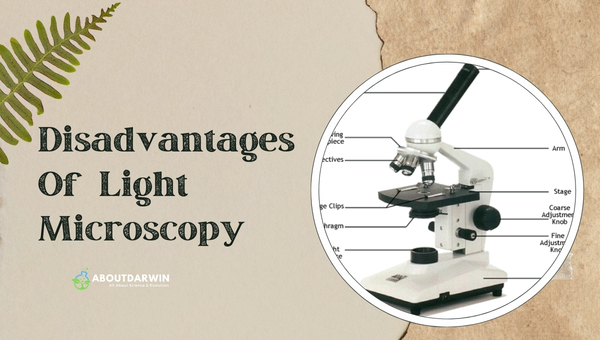Physical Address
304 North Cardinal St.
Dorchester Center, MA 02124
Have you ever wondered how we can see super tiny things that are invisible to the naked eye? Well, microscopes are our windows into the miniature world. Among them, two types stand out: light and electron microscopes. I’m here to take you through a journey where we unveil their key differences in the simplest way possible.
Keep reading if you’re curious about how each of these fascinating tools can show us so much more than meets the eye! Light microscopes use light waves to show us enlarged images of small objects, while electron microscopes use beams of electrons for an even closer look.
The main difference between them is that a light microscope can magnify up to around 2000 times, but an electron microscope goes way beyond that, up to two million times! This means with an electron microscope, I can see things at the tiniest level—like atoms—which is impossible with just light microscopy.
Contents
Microscopes, as the name implies, are intricate devices designed to view objects that are too small to be seen by the naked eye. They are a beacon of science and technology, revealing fascinating worlds that reside beyond our everyday vision.

From examining tissue samples in pathology labs to studying distant galaxies in astronomy, microscopes bridge the gap between the unseen microscopic universe and our understanding.
The importance of microscopes permeates across a range of fields. In medicine, they provide crucial insights into identifying diseases or understanding human anatomy at a cellular level.
In research and education, they lead explorations into life’s building blocks — cells and microorganisms – helping us unveil secrets of biology, physics, geology, and more. It is safe to say, then, that without these power-packed tools, our grasp on these subjects would have been far limited.
| Light Microscope | Electron Microscope | |
|---|---|---|
| Principle of Operation | More complex sample prep is needed – all specimens must be completely dry and vacuum-compatible as they need toleration against high vacuum conditions in the EM column, often thin sections, for internal structure viewing. | It uses visible light to illuminate the sample. |
| Magnification | It uses a beam of fast-moving electrons to view samples. | Offers more intense magnification, up to 50 million times the original size. |
| Resolution Power | Typically, it is less expensive and requires less maintenance. | Much higher resolution power can differentiate between objects just 0.2 nm apart due to smaller wavelengths of electrons, providing much clearer images. |
| Sample Preparation | More complex sample prep needed – all specimens must be completely dry and vacuum-compatible as they need toleration against high vacuum conditions in the EM column, often thin sections for internal structure viewing. | Relatively simple preparation is required – samples can be living or dead. |
| Cost and Maintenance | It can magnify up to 1,000 – 2,000 times the actual size. | It is more expensive due to its complexity; it requires highly trained operators and costly maintenance procedures. |
The light microscope, often referred to as an optical microscope, is probably the first image that comes to mind when you talk about microscopes. It’s a classic tool that’s been around for centuries and has become an indispensable asset in many labs and classrooms around the world.
Designed with a relatively simple structure, a light microscope uses visible light and magnifying lenses to observe specimens. This type of microscope can magnify objects up to 1,000 times their original size, allowing us a stunning peek into the realm of cells, tissues, and even live bacteria – things that would otherwise be unseen by our naked eye.
At its core, the light microscope operates on a pretty straightforward principle. It uses visible light to illuminate the specimen being examined. This light passes through the object and then through a series of lenses that magnify it.
The two main types of lenses in a light microscope are the objective lens (near the specimen) and the eyepiece or ocular lens. The objective lens gathers light from the model, magnifying it to create what’s called a real image.
This image is then stretched again by our eye when observed through the ocular lens, giving us greater detail and insight into our microscopic subject.
Also Read: Mastering Polymerase Chain Reaction: Principle & Application
Light microscopes are prominent in educational settings like biology classes, carving paths for scientific exploration. They are invaluable across medical laboratories for disease diagnosis, as well as useful in microbiology to study microorganisms. Moreover, they assist forensics and geological research through detailed analysis of rocks, minerals, and evidence fibers.
Also Read: Cetrimide Agar: Uncover Its Composition, Principle, and More
For those looking to delve deeper into the realms of the microscopic world, meet the electron microscope. Introduced in the 1930s, these advanced scopes take microscopy to another level altogether, allowing scientists to peek into structures invisible to light microscopes.
Unlike their light-emitting counterparts, electron microscopes use beams of electrons. This shift allows them unparalleled magnification and resolution power – reaching up to an incredible 50 million times exaggeration! This microscopic heavyweight allows us a glimpse into life’s smallest particles, such as viruses and atoms.
Electron microscopes represent a fundamental shift in viewing technique. Instead of using visible light as the source of illumination, electron microscopes make use of a beam of fast-moving electrons.
These are accelerated and focused using magnetic lenses onto the specimen being studied. The resulting interactions between these electrons and the sample surface create detailed images that exceed those obtained by their light microscope counterparts.
The power-packed performance of electron microscopes fits into numerous applications, making their uses vast and varied.
They have found relevance in healthcare for viral studies, made seminal contributions to nanotechnology research, and even aided forensic investigators.
Also Read: Isostatic Rebound: Uncovering Post-glacial Rebound Process
While light microscopes have their fair share of uses, they aren’t without limitations. One prime drawback lies in their limited resolution. Due to the wave nature of light and the principles of diffraction, there is a defined limit to how much detail a light microscope can provide.

Specifically, two objects closer than approximately half the wavelength of light (~200 nm) cannot be distinguished as separate entities, reducing the details viewable at very high magnifications.
This is known as Abbe’s limit, named after Ernst Abbe, who first proposed this theory. This means that for minute structures or organisms beyond this limit, a more powerful tool like an electron microscope may be needed.
For all their precision and power, electron microscopes have some significant downsides. One of the key drawbacks is their high operational cost. These are not your everyday lab tools; purchasing, maintaining, and operating an electron microscope can be a costly affair.
The sample prep for electron microscopy is another concession. It’s a complex process that often involves making ultra-thin slices of samples, coating them with a thin conductive layer, and ensuring they can withstand the high-vacuum conditions within the microscope. This time-consuming preparation process may not always be feasible or practical in every scenario.
Also Read: All About Lightning: The Power of Nature’s Light Show
Yes, both types can show 3D images, but electron microscopes provide a more detailed and higher resolution 3D image compared to light microscopes.
Indeed, there are organisms, such as viruses and some bacteria, that are too small to be viewed under a light microscope but can be clearly seen under an electron microscope.
The resolution is better in an electron microscope because it uses beams of electrons, which have much shorter wavelengths than visible light waves. This allows the device to capture finer details of the specimen.
Maintenance for each type varies – with light microscopes requiring basic cleaning and care of lenses while electron microscopes need regular professional servicing due to their complex design and operational technology.
Electrons have a much shorter wavelength than visible light, and this allows electron microscopes to produce higher-resolution images than standard light microscopes. Electron microscopes can be used to examine not just whole cells but also the subcellular structures and compartments within them.
Also Read: Unraveling Potato Dextrose Agar (PDA): Principle & More
Both light microscopes and electron microscopes hold essential roles in scientific research. While light microscopes offer simplicity and accessibility, making them perfect for educational settings or initial exploration of the microscopic world, electron microscopes ascend to an entirely different plane of magnification and resolution power.
However, it’s crucial to acknowledge the constraints of each microscope – whether it’s the limited resolution of light microscopes or the complex procedure and high costs associated with electron microscopes.
A keen understanding of these distinct aspects will guide your selection process based on your specific needs in unraveling the various mysteries held within our largely unseen microscopic world.